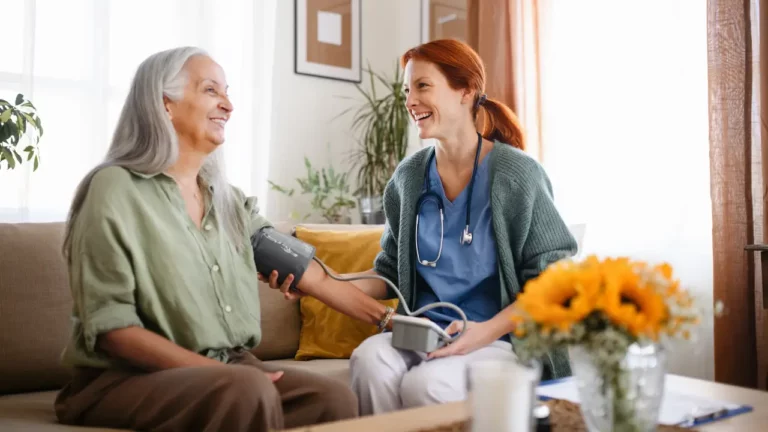Although existing as early as the 1950s, remote patient monitoring (RPM) has taken its peak during the COVID-19 pandemic. Everyone, especially seniors and chronically ill patients who are more susceptible to cross-infection, were required to stay home. This “stay-home” mandate from the government opened the opportunity for healthcare providers to utilize modern technology to virtually visit and monitor their patients.
Virtual visits have been massively adopted during this pandemic in order to reduce exposure to COVID-19 patients. However, teleconsultation can only be sustained if it is used in conjunction with RPM. Providers can connect with patients via virtual visits, but it does not allow physical tests and monitoring, frequently required for diagnosis and therapy. RPM bridged this gap, allowing providers to collect physiological information in real-time, as normally done during in-person visits.
The strong need for RPM was emphasized during this health crisis. But what will happen to RPM after the pandemic? This article will discuss the before, during, and after COVID-19 of RPM.
Benefits of Remote Patient Monitoring Before COVID-19
Traditionally, RPM was used to track patients with chronic illnesses such as diabetes and to home monitor recently hospitalized patients. RPM works by collecting physiological data from patients and sending them to the providers through a secured system. From there, the healthcare provider will be able to assess the health condition of their patients and modify their treatment plan before their health deteriorates.
RPM allowed healthcare providers to keep track of the changes in their patients’ vital signs without the need for hospital admissions or clinic visits. However, despite the benefits of using RPM, it was not immediately adopted and widely used until COVID-19 strikes. In fact, from a market of only 175 Million USD in 2015, before COVID-19, to almost 1.2 Billion USD in 2021, during COVID-19.
Benefits of Remote Patient Monitoring During COVID-19
During the pandemic, more and more patients with chronic diseases are enrolling in RPM programs to receive continuous care. However, during the pandemic, RPM was no longer isolated to patients with chronic diseases but all patients suffering from any illnesses. From chronic diseases to pregnancy to mental illness to COVID-19, all these were being monitored remotely using RPM technologies.
RPM eliminated unnecessary hospital or clinic visits and helped healthcare providers monitor their COVID-19 patients in the absence of direct contact – reducing the possibility of cross-infection and exposure to the virus. Furthermore, medical devices utilized in RPM were proven to be very useful in tracking COVID-19 patients who are not confined in medical facilities and are suffering from mild symptoms. Wearables integrated with thermometers and pulse oximeters allowed healthcare providers to collect data from COVID-19 patients. The data collected will help evaluate the progression of the patient’s symptoms.
Moreover, wearables and connected medical devices are used to keep track patients with mental illnesses. RPM helped in remotely monitoring patients and in preventing severe episodes of mental illness when they start to manifest.
Pregnant women also used RPM to regularly monitor their health without having to go to a doctor’s office, reducing the exposure of their unborn child and their vulnerable condition to the risks brought by the COVID-19 virus.
COVID-19 influenced the spread of telehealth and remote patient monitoring. RPM, like telehealth, will be around for a long time, even after the COVID-19.
Benefits of Remote Patient Monitoring After COVID-19
After achieving the herd immunity, the whole world is aiming for, one goal remains as healthcare moves toward value-based treatment, that is, lowering the rates of unnecessary hospital admissions, readmissions, and clinic visits. In the attempt to reduce these rates, healthcare providers and experts proposed for the continued use of RPM to improve the overall care system.
In a study, hospital readmission on cardiac patients declined by almost 30 percent with the help of RPM. Hence, saving at least USD 8,000 per patient per year. In addition to its benefits to cardiac patients and patients with other chronic illnesses, RPM technologies are predicted to help skilled nursing institutions with infection management and prevention, which is another leading cause of hospital readmission.
Additionally, healthcare providers will continue to employ RPM by remotely monitoring patients’ heart rates and temperatures to predict viral infections. This will allow them to provide rapid treatment while also limiting the spread of such infection, possibly preventing another pandemic from ever happening.
Takeaway
Telehealth and Remote Patient Monitoring (RPM) adoption accelerated this year in response to the COVID-19 epidemic, addressing the urgent need to ensure care access while minimizing in-person encounters. Considering their contributions during the pandemic, telehealth and RPM are here to stay, with or without COVID-19.
Related Articles:
5 Ways COVID-19 Impacts Patients with Diabetes
Remote Patient Monitoring (RPM) for Senior Healthcare
Reducing Non-urgent Emergency Department Visits through Telehealth
Remote Patient Monitoring for Patients with Mental Health Conditions
Benefits of Remote Patient Monitoring Among Pregnant Patients








